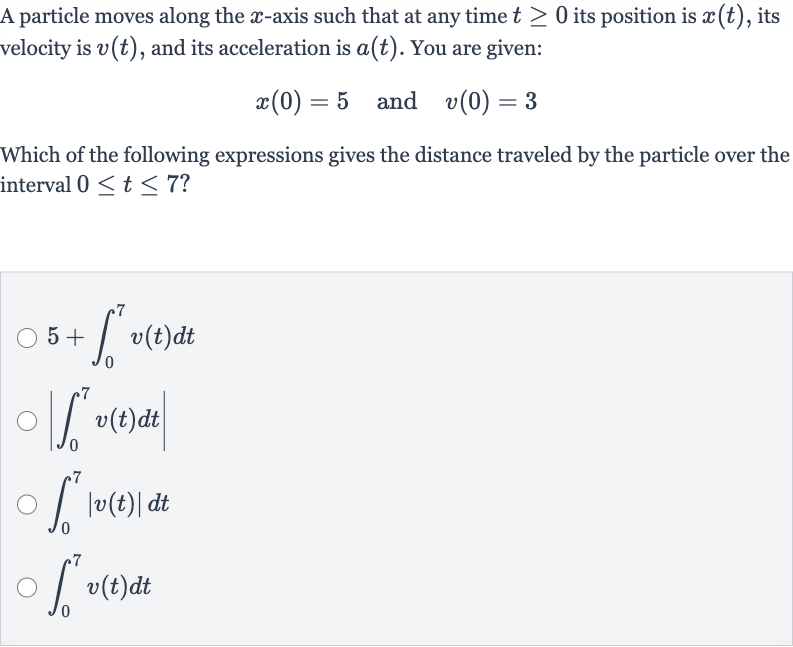Full solution
Q. A particle moves along the -axis such that at any time its position is , its velocity is , and its acceleration is . You are given:Which of the following expressions gives the distance traveled by the particle over the interval ?
- Initial Position Consideration: To find the distance traveled by the particle, we need to consider the initial position and the change in position due to the velocity over the time interval. The initial position is given by . The change in position from time to is given by the integral of the velocity function from to .
- Total Distance Expression: The expression for the total distance traveled by the particle is the initial position plus the integral of the velocity function over the given time interval. This can be written as:Distance traveled =
- Substitution of Initial Position: Since we are given , we can substitute this value into the expression:Distance traveled = This matches one of the given expressions.
- Correct Distance Expression: The correct expression for the distance traveled by the particle over the interval from to is therefore:
More problems from Relate position, velocity, speed, and acceleration using derivatives
QuestionGet tutor help
QuestionGet tutor help
QuestionGet tutor help
QuestionGet tutor help
QuestionGet tutor help
QuestionGet tutor help
QuestionGet tutor help
QuestionGet tutor help
QuestionGet tutor help

